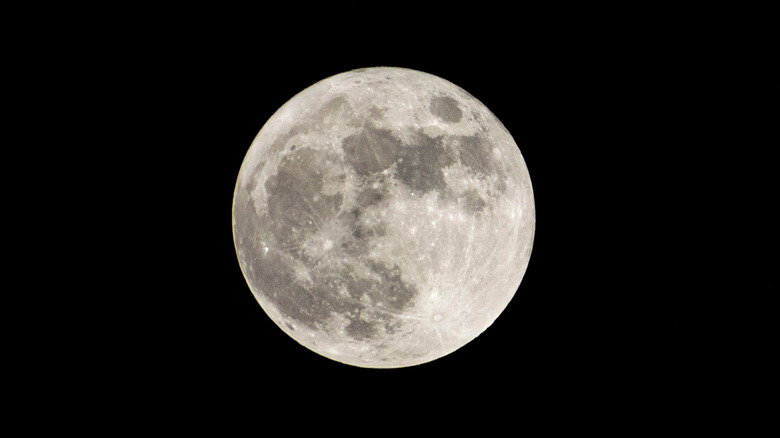Moon Dust Is More Toxic Than You Thought
For thousands of years, humans have probably looked up into the night sky and thought about the deep mysteries of the moon. Various religions centered around moon deities have come and gone throughout history. As ThoughtCo explains, there have been various moon deities in many different cultures and civilizations, like Heng-o, the Chinese lunar deity, whose name means Moon Fairy. Coyolxauhqui (meaning Golden Bells) was an Aztec moon deity. Artemis and Selene are the Greek goddesses associated with the moon as well.
But curiosity about the moon didn't stop with religion, as humans eventually took up a scientific interest in where the moon came from and what exactly its purpose is. And one such aspect of the moon that has piqued the interest of scientists is moon dust. As the New Yorker explains, scientists are still studying the properties of moon dust, but we know it covers much of the moon's surface and is actually quite toxic to humans.
A brief history of the moon
So, how did the moon come to be anyway? And what exactly are its properties? It's a long story, literally. As Space reports, the moon is apparently 4.51 billion years old, which makes it around 60 million years younger than the solar system. In terms of how the moon came to be, its birth was a bit violent, according to astronomers. Apparently, an object the size of Mars collided with Earth eons ago, resulting in a lot of Earth rock and material being ejected into space. This material was then shaped into the moon people know by gravity.
The moon has multiple phases to it, a cycle that takes around 29.5 days to complete. As Britannica explains, this is called a synodic month. Synodic is a Greek word for conjunction or meeting and is derived from synodikos. The moon helps influence the ocean tides on Earth. And it's composed of various elements, like oxygen, silicon, iron, magnesium, aluminum, calcium, and so on (via Space).
Why moon dust is incredibly toxic
Much of the moon's surface is covered in fine, granular material known as lunar soil, or moon dust. As the New Yorker says, the science behind this substance is still being studied, but astronomers know its properties, along with some solid ideas of where it comes from. Lunar dust is basically as dangerous as glass yet has a very fine, powder-like texture, which makes it quite enigmatic in structure. Moon dust is formed after meteoroids collide with the moon, which then obliterates dirt, rocks, and other materials into its powdery consistency.
Moon dust is quite a lethal threat, given how sharp and clingy it can be. But even more dangerous is its toxicity. As Live Science explains, moon dust is actually very harmful to humans. A few astronauts have reported experiencing fever-like symptoms after breathing in particles. The molecular makeup of moon dust can kill cells completely, and even cause lung and brain damage. Researchers are still studying the properties of the moon dust samples they have collected, so more is yet to be discovered about this toxic substance.


